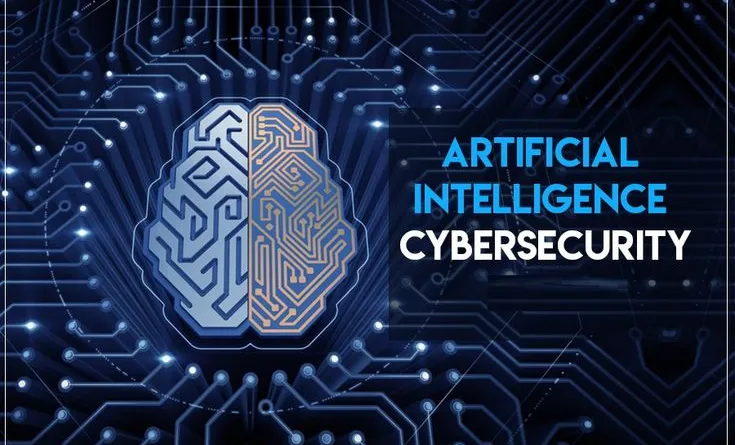Cybersecurity in the Age of AI: New Threats and Solutions; The rise of artificial intelligence (AI) has transformed industries, making processes faster, more efficient, and even predictive. However, with these advancements come significant risks, particularly in the realm of cybersecurity. As AI evolves, so do the tactics of cybercriminals, leading to new threats that require innovative solutions. This article explores the challenges and opportunities AI presents in the cybersecurity landscape and how businesses and individuals can navigate this complex environment.
The Double-Edged Sword of AI in Cybersecurity
Artificial intelligence https://genztech.online/ is both a powerful tool for cybersecurity and a potential weapon for cybercriminals. On the one hand, AI can help detect and prevent cyber threats more effectively than traditional methods. AI-driven systems can analyze vast amounts of data, recognize patterns, and respond to potential threats in real-time, often before human analysts can identify them. This capability is especially critical in an era where cyberattacks are becoming more sophisticated and frequent.
On the other hand, cybercriminals are also leveraging AI to enhance their attacks. AI-powered malware, for instance, can adapt to different environments, evading detection by traditional security systems. Furthermore, AI can be used to automate phishing attacks, making them more personalized and convincing. The same technology that helps secure networks can also be turned against them, creating a cybersecurity arms race where both defenders and attackers are continually evolving.

Emerging Threats in the AI-Driven Cyber Landscape
The integration of AI into cybersecurity has given rise to several new threats that were previously unimaginable. One such threat is the use of AI to create deepfakes—highly realistic but fake images, videos, or audio recordings. These deepfakes can be used for malicious purposes, such as blackmail, disinformation campaigns, or even social engineering attacks, where individuals are tricked into revealing sensitive information.
Another emerging threat is the weaponization of AI in automated attacks. Cybercriminals are increasingly using AI to identify vulnerabilities in networks, launch large-scale automated attacks, and even adapt in real-time to countermeasures deployed by security systems. This level of sophistication makes it difficult for traditional cybersecurity measures to keep up, necessitating more advanced and AI-driven solutions.
AI is also being used to exploit zero-day vulnerabilities—unknown security flaws in software or hardware that have not yet been patched by developers. AI can quickly scan systems for these vulnerabilities and exploit them before any countermeasures can be put in place, giving attackers a significant advantage.

AI-Enhanced Solutions for Cybersecurity
Despite the growing threats, AI also offers powerful solutions to enhance cybersecurity. One of the most significant benefits of AI is its ability to process and analyze large datasets at speeds that far surpass human capabilities. This ability is particularly valuable in threat detection and response, where AI can identify patterns and anomalies that indicate a potential breach.
AI-driven security systems can also learn from previous attacks, continuously improving their ability to detect and prevent future incidents. Machine learning algorithms can be trained on vast amounts of historical data, allowing them to recognize subtle signs of a cyberattack that might go unnoticed by human analysts. This proactive approach enables organizations to stay one step ahead of cybercriminals.
Another promising application of AI in cybersecurity is in the field of behavioral analysis. AI can monitor user behavior and detect unusual activity that may indicate a security breach, such as unauthorized access or data exfiltration. By establishing a baseline of normal behavior, AI systems can quickly identify deviations and alert security teams, allowing for a faster response.
AI is also being used to automate routine security tasks, freeing up human analysts to focus on more complex issues. For example, AI can handle the initial stages of incident response, such as identifying and isolating compromised systems, while human experts focus on investigating and mitigating the root cause of the attack.
The Role of Human Expertise in AI-Driven Cybersecurity
While AI is a powerful tool for enhancing cybersecurity, it is not a silver bullet. Human expertise remains crucial in the fight against cyber threats. AI systems are only as good as the data they are trained on, and they can still make mistakes or be fooled by sophisticated attacks. Human analysts are needed to interpret AI-generated insights, make strategic decisions, and respond to threats in ways that AI cannot.
Moreover, ethical considerations must be addressed when deploying AI in cybersecurity. The use of AI for surveillance, for example, raises concerns about privacy and the potential for misuse. It is essential to strike a balance between security and individual rights, ensuring that AI is used responsibly and transparently.

Conclusion: Navigating the AI-Driven Cybersecurity Landscape
The age of AI has brought both unprecedented challenges and opportunities to the field of cybersecurity. As cyber threats continue to evolve, leveraging AI will be critical in protecting sensitive information and maintaining the integrity of digital systems. However, this must be done in conjunction with human expertise and ethical considerations to ensure that AI enhances rather than undermines cybersecurity efforts.
In this rapidly changing landscape, organizations must stay informed about the latest developments in AI and cybersecurity, invest in cutting-edge technologies, and prioritize continuous learning for their security teams. By doing so, they can better navigate the complex threats of the AI era and build a more secure digital future.

